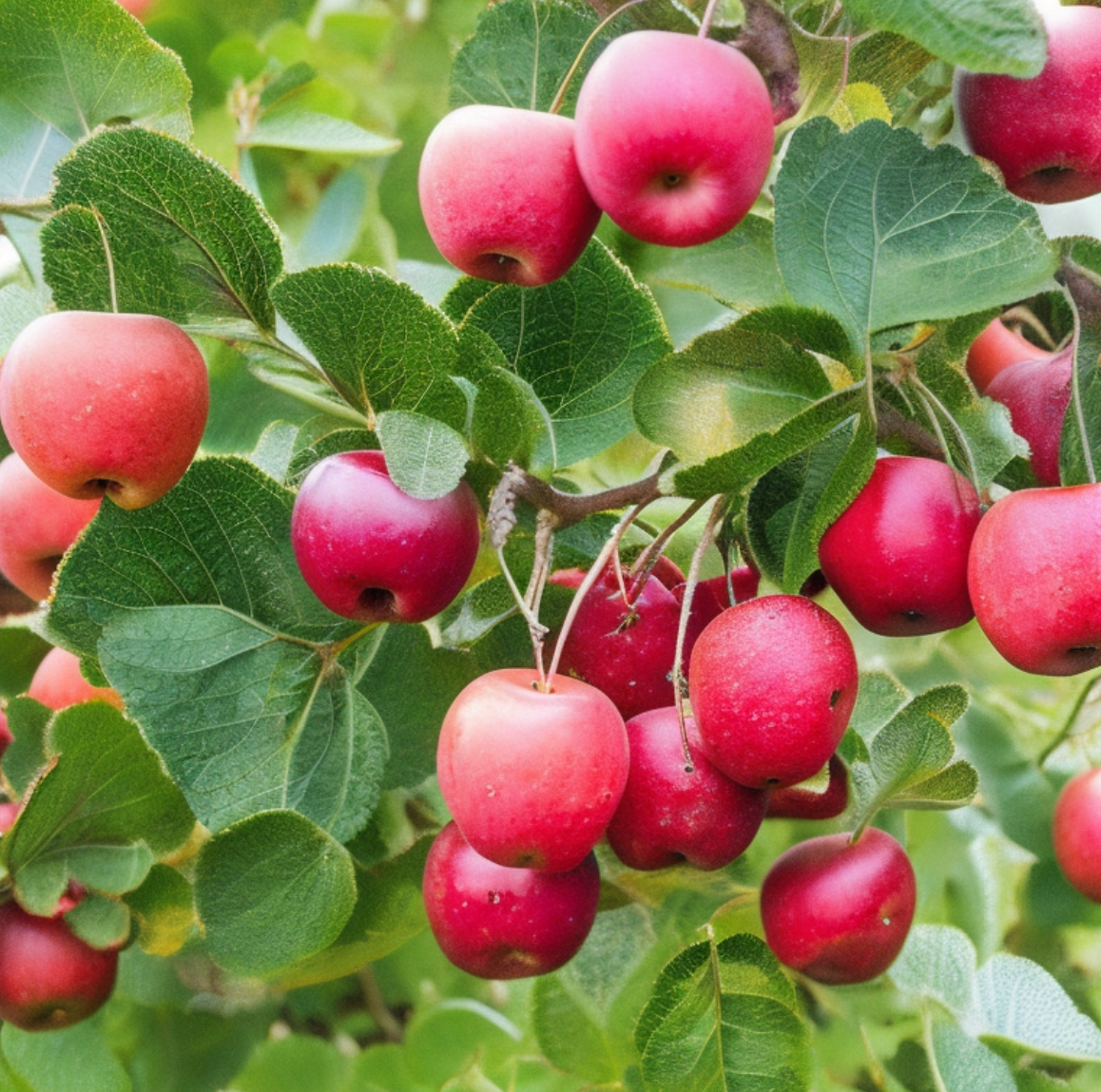 Whitney crab apples have a unique charm that has captivated horticulturists, gardeners, and food enthusiasts throughout history. These little gems, prized for their beauty and versatility, have a story that spans continents and centuries. This exploration will delve into the rich history and origin of Whitney crab apples, unravel their botanical complexities, and examine their cultivation, culinary uses, and health benefits, as well as their place in today’s commercial production and markets.
Whitney crab apples have a unique charm that has captivated horticulturists, gardeners, and food enthusiasts throughout history. These little gems, prized for their beauty and versatility, have a story that spans continents and centuries. This exploration will delve into the rich history and origin of Whitney crab apples, unravel their botanical complexities, and examine their cultivation, culinary uses, and health benefits, as well as their place in today’s commercial production and markets.
History and Origin
The Whitney crab apple, scientifically known as Malus ‘Whitney,’ is a hybrid species of crab apple tree that has been cultivated for its delicious and versatile fruit. It is believed to have originated in the United States in the late 19th century, specifically in Illinois. The cultivar is attributed to its namesake, a farmer named Whitney, who started the cultivation of these trees by crossing several different apple and crab apple species in order to develop a fruit that could be used for various purposes, such as fresh eating, canning, and juicing.
Early cultivation of the Whitney crab apple took place in small orchards and home gardens, making it a popular choice among farmers and gardeners for its adaptability and versatility. The trees are known to produce an abundant fruit crop with a distinctive taste – both sweet and tart at the same time. The fruits are small, about the size of a cherry, and have a yellow skin often flushed with red or orange, making them quite attractive. Over time, the Whitney crab apple gained popularity, not only for its fruit but also for its ornamental value. The trees bloom with beautiful pinkish-white flowers in the spring, making them an attractive addition to home landscapes.
The widespread acknowledgment of the Whitney crab apple led to its further cultivation and exploration. Many different cultivars of crab apples were starting to be developed, exhibiting different colors, shapes, and growth habits. The Whitney crab apple served as an important ancestor for many of these new cultivars originating in North America. It helped to establish the myriad of shapes, sizes, and flavors that are enjoyed in crab apples today.
The success of the Whitney crab apple has not been limited to the United States, as it has been introduced to many other regions around the world. These trees have found their way to Europe, where they have been embraced for both their fruit and ornamental value. The English, in particular, have found the Whitney crab apple to be a valuable addition to their orchards, as the fruit pairs well with many traditional English dishes, such as pork and game meat.
The Whitney crabapple (Malus x whitneyi) is a deciduous fruit tree that falls under the Rosaceae family and the Malus genus. This small deciduous tree is a hybrid species, resulting from a cross between Malus ioensis and Malus pumila, which boasts the hardy qualities of both parent species. Whitney crabapples exhibit a rounded growth habit, with a mature height that generally ranges from 12 to 20 feet, though in some instances, they can reach up to 25 feet. As for their spread, these trees can extend between 15 to 20 feet wide when fully grown.
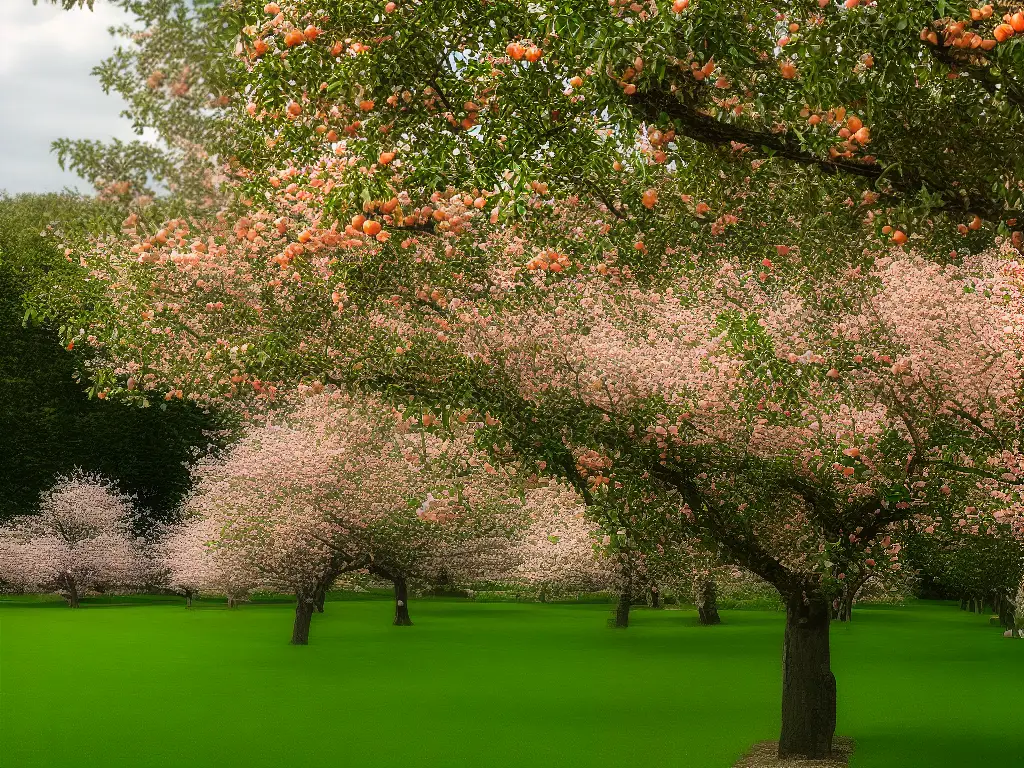
Botany and Tree Characteristics
Over the years, the Whitney crab apple has had a significant impact on the world of apple and crab apple cultivation. From its humble beginnings as a hybrid species developed by a single farmer in Illinois, it has evolved into a beloved favorite in many countries. Its delicious fruit and ornamental beauty have made it a popular choice amongst both avid gardeners and commercial growers alike. The rich history and widespread influence of the Whitney crab apple undoubtedly secure its place as a valuable and enduring cultivar within the apple family.
Whitney crabapple trees are characterized by their alternating, simple leaf arrangement. The leaves are elliptical to ovate in shape and measure approximately 1.5 to 3 inches in length. The margin of the leaves is serrated, and the upper surface features a dark green hue while the underside is paler in color. In the spring, clusters of pink flower buds develop, which blossom into fragrant, white flowers in late April to early May, attracting pollinators like bees and butterflies.
Bark characteristics of the Whitney crabapple tree play a role in its identification and overall appearance. The bark is grayish-brown, with a rough texture that may become scaly as the tree ages. Young branches display a smooth, reddish-brown surface, which gradually darkens and becomes more textured over time. The growth rate of the tree is considered slow to moderate, with an annual increment of about 12 to 18 inches per year.
One of the most notable features of the Whitney crabapple tree is its fruit production. The tree is prolific, producing an abundant crop of small, greenish-yellow fruits adorned with a red blush. The fruit measures about 1 to 1.25 inches in diameter and has a firm, crisp texture with a tart flavor, making it suitable for consumption fresh, in preserves, or juiced. The fruit ripens in late summer to early fall and can provide an essential food source for wildlife like birds and mammals, who may partake in its bounty.
The Whitney crabapple tree is known for its beautiful flowering display, delicious small fruit, and adaptability to varying soil conditions. Thriving in well-drained, loamy or clay soils with moderate fertility, it prefers slightly acidic to neutral pH levels but can tolerate mildly alkaline conditions. Growing best in full sun, with partial shade also suitable for growth and fruit production, the Whitney crabapple can be a decorative and productive addition to orchards, home gardens, and landscapes while benefiting the surrounding ecosystem.
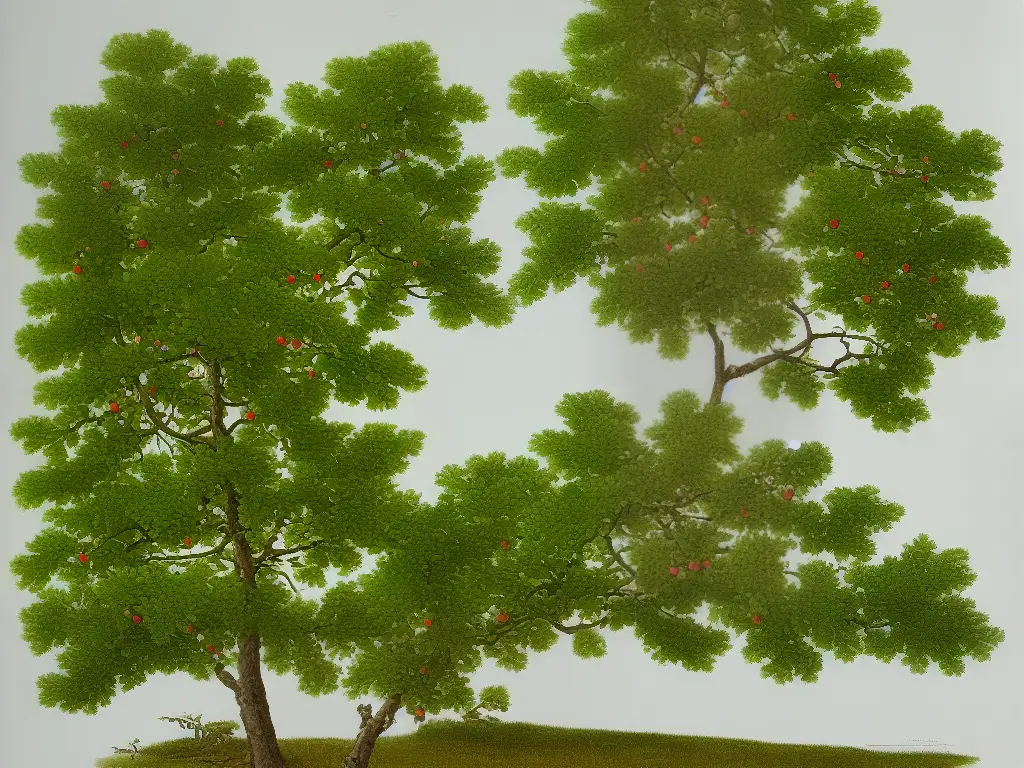
Flowering and Fruit Development
As an enthusiast or hobbyist, learning about Whitney crab apples can be an enjoyable and rewarding experience. The flowering process is an essential stage in the life cycle of a Whitney crab apple tree. Thus, understanding the bloom times, pollination requirements, and fruit development time frames is key to ensuring a successful harvest and will provide a stronger foundation for cultivating a thriving crabapple garden or landscape.
The flowering process in Whitney crab apples typically begins in late spring, with the exact timing varying depending on factors such as climate and tree maturity. The tree’s delicate blossoms begin to emerge alongside its lush, green foliage. These flowers, which can range in color from white to a light pink hue, often appear in clusters and provide a stunning visual contrast to the surrounding greenery. These blossoms not only beautify the landscape but also play a critical role in the development of the Crabapples.
Pollination is a crucial factor in determining the success of fruit development on Whitney crab apple trees. These trees are not self-fertile, which means they require cross-pollination from another crab apple variety or a compatible apple tree planted nearby to produce fruit. Bees play a significant role in the pollination process, as they transfer pollen from one tree’s flowers to the pistil of another, allowing for fertilization and fruit development to occur. To ensure proper pollination, it is recommended to have multiple compatible trees planted within close proximity, ideally within 50 feet of each other.
Following successful pollination, the fruit development process commences. Over the next few months, the fertilized blossoms develop into small, red or green fruit. Whitney crab apples are often smaller than commercial apple varieties, typically measuring an inch in diameter, but they make up for their size with a unique and delicious flavor. The fruit’s texture is firm, crisp, and juicy, which makes it perfect for use in recipes or consumed fresh off the tree.
The fruit development timeframe for Whitney crab apples can vary, with factors such as weather, pollination success, and tree health all impacting the timeline. In general, fruit ripeness is achieved by late summer or early fall, with harvest times usually peaking in September or October. As the fruit ripens, it’s essential to monitor for any pests or disease that could impact the crop, and to provide necessary care to ensure a bountiful harvest of these beautiful and flavorful fruits.
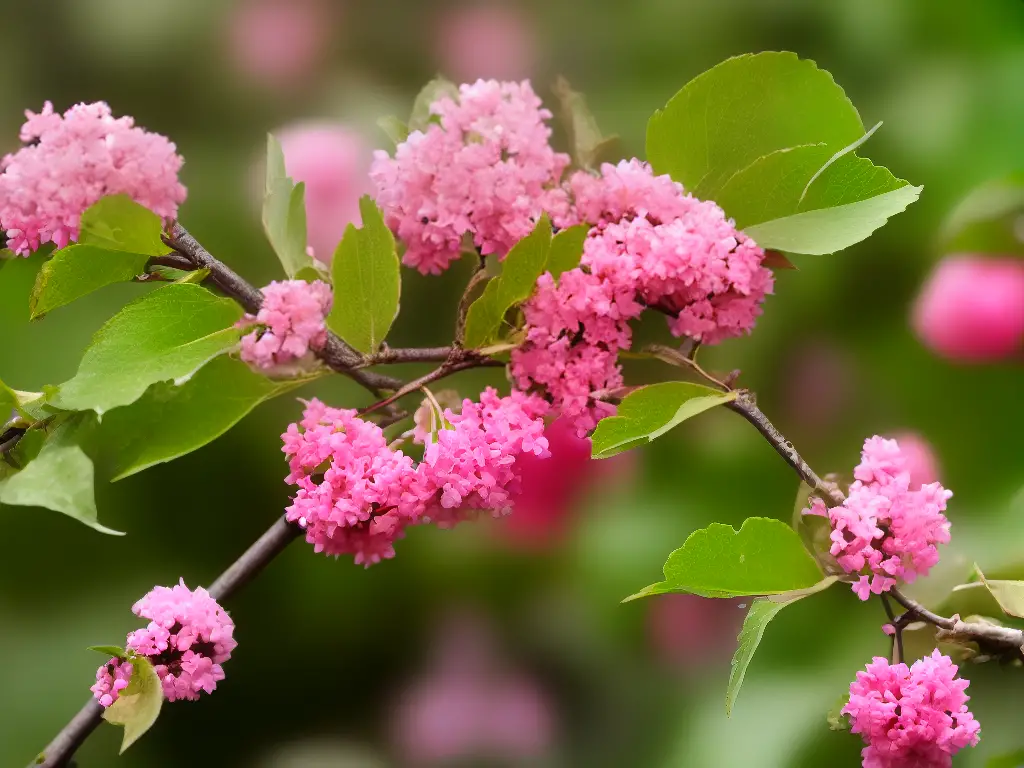
Culinary Uses
To enjoy the flavor and nutritional benefits of Whitney crab apples year-round, other preservation techniques, such as making crab apple jelly or apple butter, can be employed. Homemade jellies and apple butter make for delicious spreads on toast or paired with cheeses and meats for a unique flavor combination. By incorporating these preservation techniques, you can explore various culinary uses for your Whitney crab apples while maintaining a more extended storage life.
One of the most popular ways to use these crab apples is in the preparation of jellies and jams. Their high pectin content ensures a good set when making preserves, while their intense flavor adds depth to the finished product. Moreover, Whitney crab apple jellies are delicious when spread on toast or used as a glaze for meats like pork or chicken.
Sauces made from Whitney crab apples can elevate numerous dishes to new heights of flavor. Due to their natural tartness, they can act as a perfect counterbalance to the rich and savory tastes of various meat dishes. For example, a rustic homemade Whitney crab apple sauce can be used as an exquisite accompaniment to roast duck, or it can be incorporated into a luxurious gravy to serve alongside pork tenderloin. These tart and sweet sauces can also be used as a base for chutneys or relishes with the addition of aromatic spices like cinnamon, ginger, and cloves.
Baked goods featuring Whitney crab apples are truly extraordinary in both taste and texture. The apple’s firm-textured flesh maintains its shape when cooked, which means that it is a superb choice for pies, tarts, and cobblers. Additionally, the unique flavor of Whitney crab apples adds a hint of tanginess to classic apple-based desserts, making them all the more enticing. Combining these crab apples with spices like cinnamon, nutmeg, and allspice further elevates their flavor profile, resulting in delectable treats that are sure to impress.
Whitney crab apples can also be used to make refreshing and innovative ciders. The small size of the fruit means that the cider-making process may be more labor-intensive, but the resulting beverage is worth the effort. The natural sweetness of the apples is balanced by their tartness, producing a cider that is neither too sweet nor too acidic. Homemade Whitney crab apple ciders can be enjoyed both still or sparkling, and they can also be bottled for long-term storage, allowing you to savor the flavors of the fruit long after the harvest season has passed.
Whitney crab apples offer not only an intriguing culinary experience but also numerous health benefits. When cooked, their tartness is softened, making them a wonderful addition to dishes such as apple-stuffed pork loin or venison medallions served with a crab apple gastrique. With the versatility of these small yet flavorful fruits, the culinary possibilities for Whitney crab apples are endless, limited only by your imagination and creativity.

Health Benefits and Nutritional Information
Beyond their culinary uses, Whitney crab apples are known for their attractive appearance and ability to enhance home gardens as well as their health benefits. These small fruits are packed with essential nutrients, including vitamins A, C, and E, potassium, and dietary fiber. In addition, they are a rich source of antioxidants, which play a crucial role in protecting the body against chronic diseases by neutralizing harmful free radicals.
One of the most notable health benefits of Whitney crab apples is their high vitamin C content. A single serving of crab apples contains approximately 22% of the recommended daily intake of vitamin C, which supports a healthy immune system, aids in wound healing, and helps maintain the strength of blood vessels. Furthermore, the presence of vitamin A in Whitney crab apples can improve vision and promote healthy skin, while vitamin E serves as a potent antioxidant that protects the body’s cells from damage.
Another major advantage of incorporating Whitney crab apples into the diet is their rich antioxidant components, notably polyphenol compounds, including flavonoids and phenolic acids. Research has shown that these natural compounds exhibit anti-inflammatory, anticancer, and neuroprotective properties. Therefore, regular consumption of Whitney crab apples may help reduce the risk of chronic inflammation, certain types of cancer, and neurodegenerative disorders such as Alzheimer’s disease.
Due to their high fiber content, Whitney crab apples can effectively aid in digestion and support overall gastrointestinal health. Dietary fiber serves as a bulking agent that facilitates regular bowel movements, prevents constipation, and helps maintain a healthy balance of gut bacteria. Moreover, it contributes to weight management and blood sugar regulation by promoting a feeling of fullness and slowing down the absorption of glucose into the bloodstream.
Whitney crab apples, a popular cultivar of the Malus genus, are small, ornamental fruit trees admired for their versatile culinary uses, delicious taste, and aesthetic appeal in landscapes. Apart from fulfilling daily nutrient requirements, incorporating these nutrient-dense fruits into a balanced diet can contribute to the prevention and management of various health conditions. Enjoy Whitney crab apples fresh, cooked, or even transformed into delightful preserves and sauces to add valuable nutrition and flavors to any culinary creation.
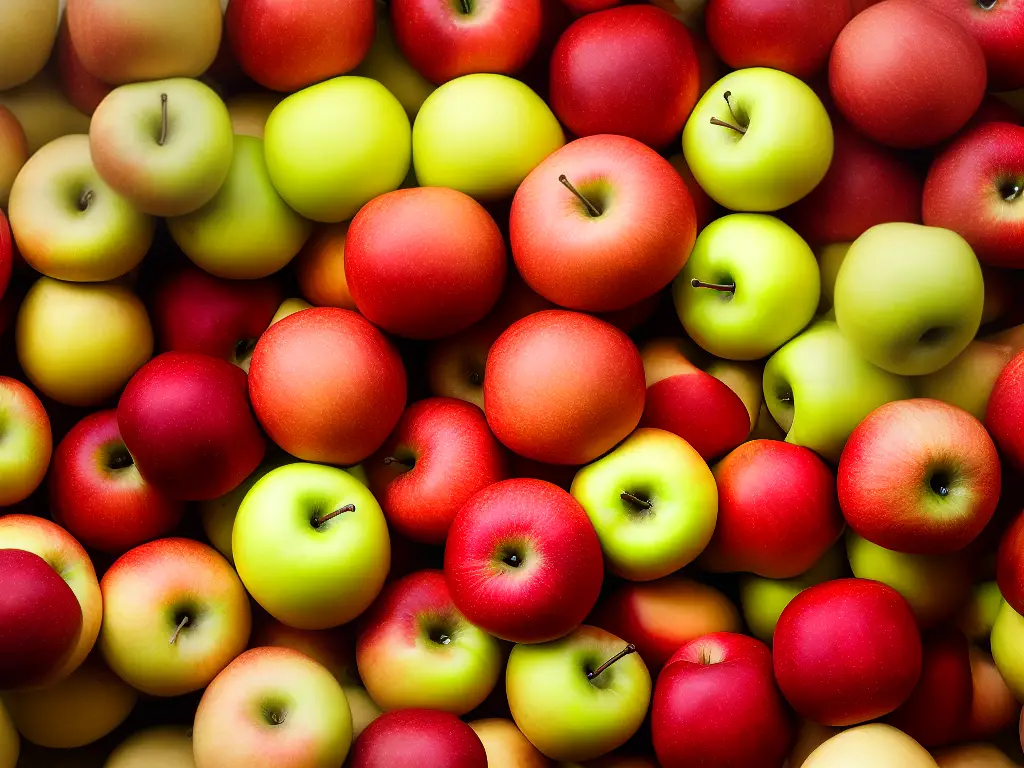
Commercial Production and Markets
In the apple industry, commercial production of Whitney crab apples is driven by their desirable characteristics, such as disease resistance, prolific fruit production, and adaptability to a range of soil and climate conditions. Although their cultivation is relatively niche compared to conventional apple varieties, they play a significant role in diversifying orchards, providing pollination partners for other apple varieties, and catering to specific market demands. By becoming skilled in growing and using Whitney crab apples, enthusiasts and hobbyists can take advantage of these unique characteristics and contribute to a vibrant and diverse apple industry.
Several popular cultivars of crab apples, including Whitney, are grown in various regions across the globe. Whitney crab apples originated in the United States, where they continue to be cultivated in various hardiness zones due to their adaptability. These crab apples are appreciated for their large fruit size, at around 1 inch in diameter, and sweet flavor, making them suitable for eating fresh or using in preserves and ciders. Furthermore, the tree’s beautiful white blossoms, along with its appealing fruit, make it a popular choice for ornamental landscaping purposes.
Global apple consumption statistics highlight the sheer popularity of apples as a fruit, although they encompass all types of apple varieties and not just Whitney crab apples. According to the Food and Agriculture Organization (FAO) of the United Nations, the global apple production in 2019 reached nearly 86 million metric tons, showcasing the enormous demand for apples in domestic and international markets. In terms of apple consumption, the United States, China, and the European Union are the largest markets with a combined consumption of over 50 million metric tons in 2019.
In the commercial markets, Whitney crab apples are commonly found at local farmer’s markets, specialty grocery stores, or even sold directly from the orchards. As the fruit’s delicate nature makes it less suitable for long-duration storage and transportation, they are predominantly marketed and consumed within the regions where they are grown. In recent years, there has been a growing interest in sustainable farming practices and the promotion of locally sourced produce, which has consequently increased the demand for locally-grown crab apples such as the Whitney variety.
Another factor contributing to the increasing interest in Whitney crab apple production is the current consumer shift towards more diverse and heirloom apple varieties. Those who appreciate unique flavors, natural sweetness, and varied textures in their apples are turning towards lesser-known yet flavorful cultivars like Whitney. Moreover, consumers are increasingly seeking out sustainable food options cultivated with minimal chemical inputs, where crab apples like Whitney, which are disease-resistant, come into play. As a result, Whitney crab apples are enjoying a resurgence in popularity, ensuring their cultivation remains an essential component of the broader apple market.
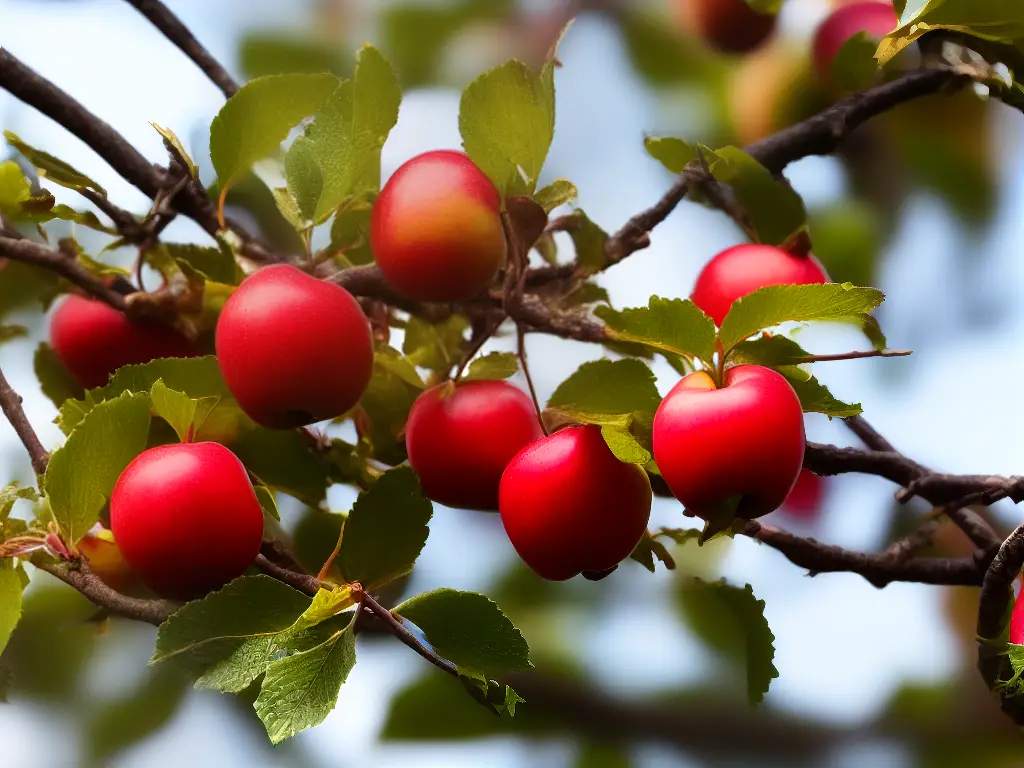
Throughout this exploration, it has become evident that Whitney crab apples hold a special place in the world of fruit trees. Their fascinating history, intriguing botanical characteristics, and adaptable cultivation needs make them accessible to a wide range of enthusiasts. The versatility of their culinary applications combined with their nutritional benefits and commercial success further showcase the enduring importance of Whitney crab apples. As the appreciation for these delightful fruits continues to grow, there is no doubt that they will remain a cherished and celebrated part of human culture.
